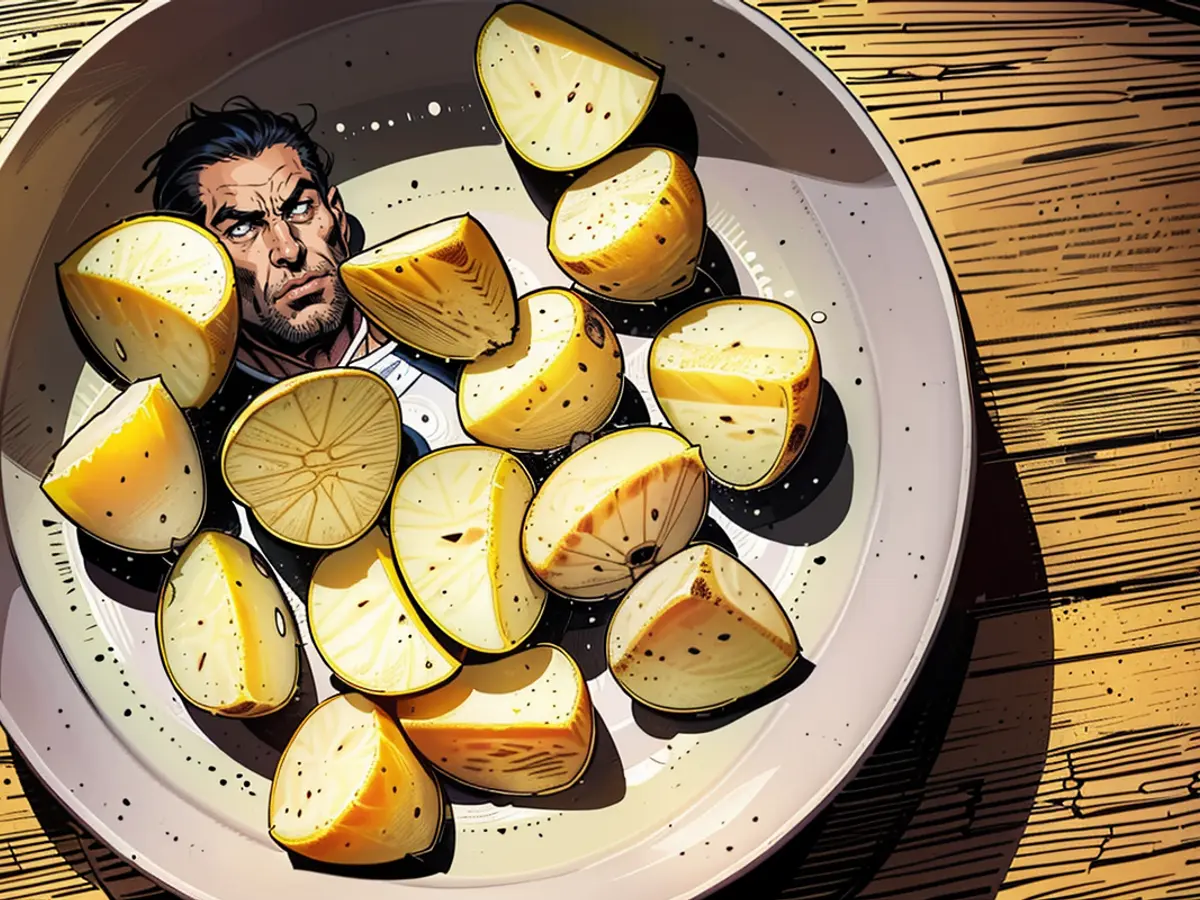The question explores why resistant starch is beneficial for the digestive system.
Cooling down prepared pasta and potatoes results in the formation of a specific type of carbohydrate called resistant starch.Perhaps you're skeptical about this claim, considering it seems too fantastic to be true.Fortunately, there's a kernel of truth in it.As pasta or potatoes cool, this resistant starch forms.Our small intestine is unable to digest it, as a result.
Do not expect pasta salads or potato salads to function as a magic bullet for weight loss.However, there's another reason why we should incorporate more foods containing resistant starch into our diet regularly.Three experts offer their insights.
What, precisely, is resistant starch?
To gain a better understanding of resistant starch, we should first learn about starch itself.It is a type of carbohydrate, chemically intricate, that naturally exists in foods such as potatoes, bread, pasta, rice, grains, seeds, legumes, and corn.When popped into a pot and cooked till done, the starch molecules shatter, becoming digestible by us.
Resistant starch is a unique type of starch.It takes form when cooked food is allowed to cool down.For instance, pasta, rice, and potatoes used to create corresponding salads.Cooling brings about changes in starch molecules, rendering them immune to our digestive enzymes during the reheating process.
"Resistant" here signifies immune to the digestive enzymes in the small intestine.Their job is to decompose food so that it may be absorbed by the body.Anything that escapes digestion in the small intestine, such as fiber, moves into the large intestine and ultimately turns into feces.
Resistant starch is thus a form of soluble fiber, as mentioned by Marcus Kever, a dietetic student at the University Hospital Essen.It doesn't mean that nothing happens to it in the large intestine.The bacteria there break it down, eventually transforming it into substances that promote good health.
Is weigh loss a consequence of consuming resistant starch?
This is a partial truth.Birgit Blumenschein, a dietitian and medical educator, comments, "The theory of weight loss stems from resistant starch's non-digestibility, leading to fewer calories being consumed and eventually being excreted."
It is true that foods high in resistant starch offer the body fewer calories and contribute to satiety, prolonging the feeling of fullness.However, weight loss is a multifactorial process, and success requires a range of factors to be addressed.Marcus Kever, a dietetic student at the University Hospital Essen, explains, "A significant weight loss cannot be achieved only by increasing the consumption of resistant starch, as per current research."
What are the advantages of incorporating resistant starch into our diet?
Even though weight loss is not a guaranteed consequence, resistant starch has significant benefits for our gut and the bacteria living within it.As Barkley Kever explains, it functions as a food source for the colon bacteria that break down the resistant starch.Short-chain fatty acids, such as butyric acid or butyrates, are created in this process.These fatty acids support the colon mucosa and promote optimal immune function, which in turn bolsters the gut immune system.
If I wish to incorporate resistant starch into my diet, what should I keep in mind?
First, it's essential to understand that resistant starch isn't limited to cooled pasta and potatoes.As mentioned by Blumenschein, it is naturally present in legumes such as white beans and underripe bananas, as well as in coarsely ground grains.Here are three tips:
Ease into it slowly: Individuals on a low-fiber diet may initially experience digestive side effects, such as bloating, constipation, cramps, or diarrhea, when increasing their intake of resistant starch.Start by gradually incorporating more resistant starch into your diet.
Allow plenty of time for cooling down: Approximately 10% of the starch converts to resistant starch after cooling for approximately 12 hours.Therefore, it is recommended to let food cool for at least 12 to 24 hours before reheating.
Reheating won't erase resistant starch: The percentage of resistant starch in cooled potatoes or rice may increase slightly after reheating, as Terjung explains.This is in line with the popularity of meal prep: cooking pasta, potatoes, or rice in advance and using them to create diverse dishes over several days saves time while also supporting good health.
Food and nutrition play a crucial role in incorporating resistant starch into our diets. Besides cooled pasta and potatoes, sources of resistant starch include underripe bananas, white beans, and coarsely ground grains. It's essential to introduce resistant starch gradually into the diet to avoid digestive side effects and let food cool for at least 12 to 24 hours before reheating to maximize its conversion to resistant starch.







